SIGGRAPH 2001: n-space
Chair(s):
- Dena Elisabeth Eber
-
- Bowling Green State University
Art Show Administrator(s):
- Jill Pareti
-
- Bowling Green State University
Location:
Los Angeles, California, United States of America
Dates:
August 12-17, 2001
Art Show Overview:
“Yet I exist in the hope that these memoirs…may find their way to the minds of humanity in some dimension, and may stir up a race of rebels who shall refuse to be confined to limited dimensionality.” – from “Flatland.” Edwin Abbott, 1884
Introduction
N-SPACE, the SIGGRAPH 2001 Art Gallery, takes viewers to a place where ideas and expression are rich, and artistic freedom is unconstrained by dimension. All the work in the exhibition is in some way created with or connected to digital technology, but the thread of the show is content.The more than 90 works in the exhibition encourage the SIGGRAPH 2001 audience to become a part of the art; to explore, question, and challenge their own interpretations and critiques. To do this, the N-Space exhibition has a treasure map of valuable ideas to search for in the gallery, as well as a gallery facilitator who holds a number of daily sessions to help engage viewers. The salon-style exhibition entices visitors to seek golden ideas embedded in the nooks and crannies of its turn-of-the-century decor.
The gallery showcases an even distribution of interactive installations, digital paintings, digital images, sculptures, performances, panels, animation, artist talks, Web sites, and interactive desktop programs.
Visitors interact with the performers and the installations: from wondering robots and stock market puppets to stirring-yet-beautiful pieces about women in foreign societies and those in the “have-not” worlds. Through the technology, participants experience a taste of life from distant dimensions.
The Web works further expand the interactivity of the installations to include a larger community, so users can experience a world different from their own. To do this, they traverse layers of exquisite form and complex ideas that exist in distant sites and far away spaces.
Although not physically interactive, the animations, videos, and 2D works captivate viewers through the aesthetic wonders of digital paint, mixed media, 3D models, digital photography, animation, and digital video. The works impel participants to question the distinction of media categories and the so-called “truth” embedded in them.
N-SPACE, the Studio, the Creative Applications Lab, SIGGRAPH TV, and Emerging Technologies
N-Space extends its boundaries into other programs to show aspects of the artists and their work in alternative, more suitable contexts. While some artists talk about preparing documents for print and demonstrate output techniques in the studio, others describe their processes during hands-on sessions in the Creative Applications Lab (CAL). SIGGRAPH TV provides highlights of the gallery, opening up the exhibition experience to viewers in other locations. Many of the innovations showcased in Emerging Technologies might be considered art in and of themselves, with their content-rich applications displayed in the adjacent art gallery. This symbiotic relationship often blurs the distinction between technology and art, further encouraging the viewer to simply experience the work.Art Discussions, Panels, Art Culture Papers, and Art Talks
The art gallery branches out to the Panels program to open the dialogue of gaming and art in Game Stories: Simulation, Narrative, Addiction. N-Space has two art discussions within the gallery: Erasing Boundaries: Intermedia Art in the Digital Age and The Pixel/The Line: Approaches to Interactive Text along with presentation of the art and culture papers. The essays, published in part here, will appear in full length in Leonardo and Digital Creativity.It is this expression and representation that N-Space exhibits: art works that are not only technically proficient and novel, but that also go beyond the medium and into the realm of ideas, a place where the medium acts as a conduit for the message.
Committee(s):
- Leslie Balkany
-
- Ackland Art Museum
- University of North Carolina at Chapel Hill
- Heather Elliott-Famularo
-
- Bowling Green State University
- Sue Gollifer
-
- University of Brighton
- ISEA International Headquarters
- Chris S. Johnson
-
- Northern Arizona University
- Carol Lafayette
-
- Texas A&M University
- Richard May
-
- Battelle Memorial Institute
- University of Washington
- Bonnie L Mitchell
-
- Bowling Green State University
- Amy Morie
-
- Mia Lehrer & Associates
- Karen Sullivan
-
- Ringling School of Art and Design
- Noah Wardrip-Fruin
-
- New York University
- Ian Gwilt
-
- Wanganui Polytechnic
- Machiko Kusahara
-
- Independent Curator and Consultant
- Bonnie L Mitchell
-
- Bowling Green State University
General Committee:
Additional Committees:
Art Papers Reviewers:
- Dena Elisabeth Eber
- Noah Wardrip-Fruin
- Eugene Thacker
- Johanna Drucker
- Michael Mateas
- Phoebe Sengers
- Rebecca Ross
- Mark Bernstein
- Marjorie Luesebri
Website:
https://www.siggraph.org/artdesign/gallery/S01/intro.html
Acknowledgements:
Treasure Map Art Direction
Carol LafayetteDesign
Christina GarciaResearch
Barbara Ellison
Exhibition Artworks:
-
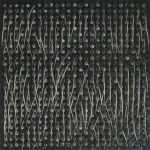
2000.12a and 2000.12b
[Kenneth A. Huff]
Categories: [2D & Wall-Hung] -

7369
[Gloria DeFilipps Brush]
Categories: [2D & Wall-Hung] -

7450
[Gloria DeFilipps Brush]
Categories: [2D & Wall-Hung] -

7471
[Gloria DeFilipps Brush]
Categories: [2D & Wall-Hung] -
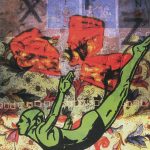
A Piece of the Pie
[Melissa Harshman]
Categories: [2D & Wall-Hung] -
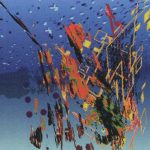
Altzero 3
[James Lane] [Anthony Rowe]
Categories: [Internet Art] -

angst in the land of frozen syllables
[Harvey Goldman]
Categories: [2D & Wall-Hung] -

Artificial Paradises
[Martin Howse]
Categories: [Performance] -
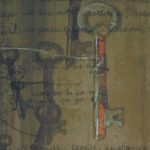
Ask Yourself
[Jessica Maloney]
Categories: [2D & Wall-Hung] -
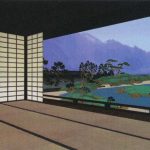
Beyond Manzanar
[Zara Houshmand] [Tamiko Thiel]
Categories: [Augmented Reality/Virtual Reality] [Installation] -

Blue Suspension
[Kent Oberheu]
Categories: [2D & Wall-Hung] -
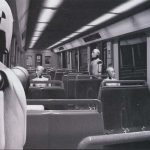
Boite Noire
[Eric Augier]
Categories: [Animation & Video] -
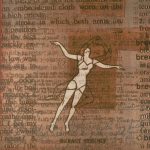
Breast Stroke
[Melissa Harshman]
Categories: [2D & Wall-Hung] -
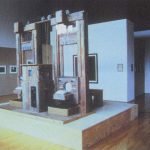
CASE STUDY 5510/CASE STUDY 5510-B
[Tammy Knipp]
Categories: [Installation] [Interactive & Monitor-Based] -

Chaotic Robotic Synesthesia
[Leesa Abahuni] [Nicole Abahuni]
Categories: [Performance] -

chelovechki-01
[Yelena Ilkanayev]
Categories: [2D & Wall-Hung] -
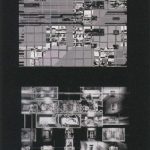
City Block
[Erika Schwarz]
Categories: [Animation & Video] -
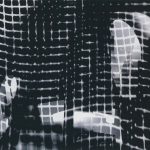
Closed Concealments
[Kimberly Burleigh]
Categories: [2D & Wall-Hung] -
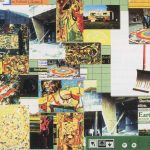
CollageMachine: A Streaming Collage Brow...
[Andruid Kerne]
Categories: [Internet Art] -

Commuter's Tunes
[Ana Z. Ursyn]
Categories: [2D & Wall-Hung] -
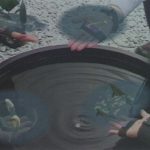
Contact Water
[Taisuke Murakami]
Categories: [Augmented Reality/Virtual Reality] [Installation] -
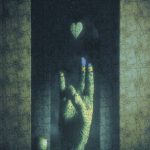
courage
[Harvey Goldman]
Categories: [2D & Wall-Hung] -
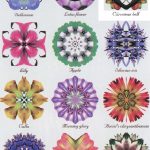
Crystal Flower
[Yayoi Yokoyama]
Categories: [2D & Wall-Hung] -
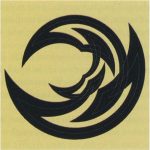
Curving Spirolaterals
[Robert J. Krawczyk]
Categories: [2D & Wall-Hung] -
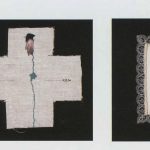
Die Zeitstucke (Timeworks)
[Piotr Szyhalski]
Categories: [Installation] -
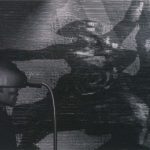
Disconnected
[Hyun Seung Kim]
Categories: [Animation & Video] -
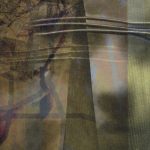
Disoriented but not Confused
[Jessica Maloney]
Categories: [2D & Wall-Hung] -
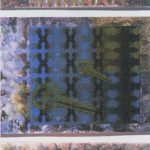
Don't Say Goodbye (Variation 1)
[Leslie Nobler]
Categories: [2D & Wall-Hung] -

Early Light
[John S. Banks]
Categories: [Animation & Video] -
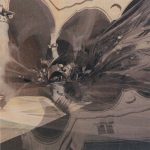
Entering the Event Horizon
[Andrzej Zarzycki]
Categories: [2D & Wall-Hung] -

Excerpts from the 1999 War Refugees Coun...
[Hans E. Dehlinger]
Categories: [2D & Wall-Hung] -
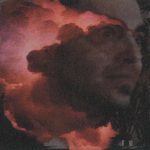
Explosion
[Charu Sharma]
Categories: [Animation & Video] -
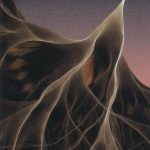
Exponential
[Eric Heller]
Categories: [2D & Wall-Hung] -
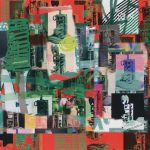
F-G and the Iron Clocks of Film
[James Faure Walker]
Categories: [2D & Wall-Hung] -

Faisons Les Zigopattes! (Let's do the Zi...
[Bruno Follett]
Categories: [Animation & Video] -

Forehead
[Michael J. O’Rourke]
Categories: [2D & Wall-Hung] -
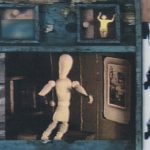
Futurity
[Christopher Chapman]
Categories: [Animation & Video] -
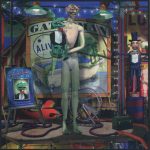
Gatorman
[Steven Ramsey]
Categories: [2D & Wall-Hung] -
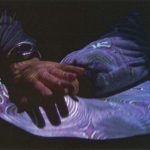
Gemotion
[Yoichiro Kawaguchi]
Categories: [Installation] -
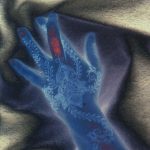
Gestures IV
[Lyn Bishop]
Categories: [2D & Wall-Hung] -

Gestures V
[Lyn Bishop]
Categories: [2D & Wall-Hung] -
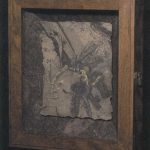
Ghost Town Artifacts: The Keys
[Naomi Ribner]
Categories: [2D & Wall-Hung] -
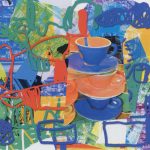
Global Coffee
[James Faure Walker]
Categories: [2D & Wall-Hung] -
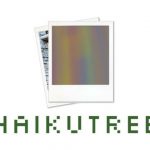
HaikuTree
[Doug Goodwin]
Categories: [Internet Art] -
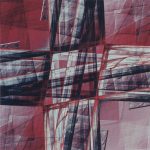
HellFire III
[Michael Field]
Categories: [2D & Wall-Hung] -

Heroine in Peril
[Tina Bell Vance]
Categories: [2D & Wall-Hung] -

Hungboga
[Semi Ryu]
Categories: [Animation & Video] -
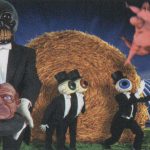
ICKY FLIX: The Residents
[Starr Sutherland]
Categories: [Animation & Video] -
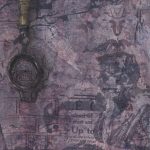
If These Walls Could Talk: Bubby's Story
[Naomi Ribner]
Categories: [2D & Wall-Hung] -

Indefinable Moods
[Kathy Smith]
Categories: [Animation & Video] -

infection
[Jeff Groves]
Categories: [Animation & Video] -
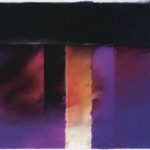
Intercere #11
[John Fillwalk]
Categories: [2D & Wall-Hung] -
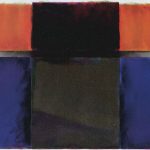
Intercere #17
[John Fillwalk]
Categories: [2D & Wall-Hung] -
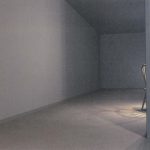
Intersections
[Kyle Riedel]
Categories: [2D & Wall-Hung] -
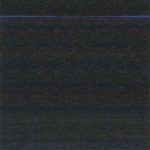
Intuitive Ocusonics
[Andrea Polli]
Categories: [Performance] -
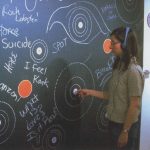
Invisible Places
[Emily Blair] [Michelle Illuminato]
Categories: [Installation] [Interactive & Monitor-Based] -
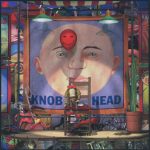
KnobHead
[Steven Ramsey]
Categories: [2D & Wall-Hung] -

Loading Animated Version
[Angie Waller]
Categories: [Animation & Video] -

Manufactured Existence: The Remains
[Jason Zimmerman]
Categories: [2D & Wall-Hung] -

Moonlit Manifestation
[Ana Z. Ursyn]
Categories: [2D & Wall-Hung] -
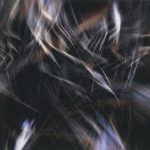
Music Creatures
[Marc Downie]
Categories: [Installation] [Interactive & Monitor-Based] -
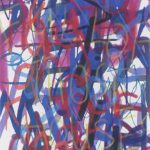
my language
[Clay Debevoise]
Categories: [Animation & Video] [Internet Art] -

NAFTA Stock Puppets
[Jim Mason]
Categories: [Installation] [Interactive & Monitor-Based] -

Netizens, net-fringers and outsiders
[Rejane Spitz]
Categories: [Installation] [Interactive & Monitor-Based] -

Network Communicate Kaleidoscope
[Kazushi Mukaiyama]
Categories: [Internet Art] -
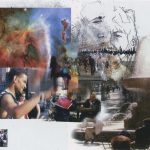
New York Mural: #2, for SIGGRAPH
[Michael J. O’Rourke]
Categories: [Installation] [Interactive & Monitor-Based] -
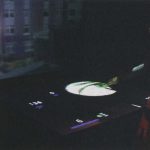
Not You, Not Here
[Michael Rodemer]
Categories: [Installation] [Interactive & Monitor-Based] -
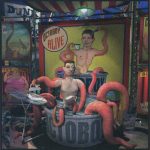
Octoboy
[Steven Ramsey]
Categories: [2D & Wall-Hung] -
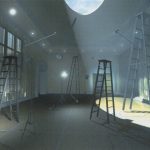
Oculadders, part 1
[David Haxton]
Categories: [2D & Wall-Hung] -
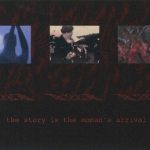
Of Shifting Shadows
[Gita Hashemi]
Categories: [Interactive & Monitor-Based] -

Ojo Por Ojo
[Francisco Zepeda]
Categories: [Animation & Video] -

Old House in the Shadow of the Castle
[Cynthia Beth Rubin]
Categories: [2D & Wall-Hung] -
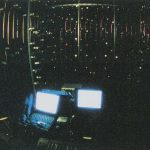
Omnipresence Ver.1
[Haruo Ishii]
Categories: [Installation] [Sound Art] -
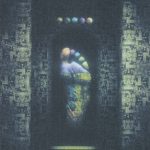
one foot
[Harvey Goldman]
Categories: [2D & Wall-Hung] -
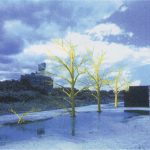
Overgrown Artificiality
[Hye Jin Yoo]
Categories: [2D & Wall-Hung] -

Paintings from the Interface: Battery Po...
[Ian Gwilt]
Categories: [2D & Wall-Hung] -
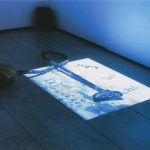
Poem Vacuum Cleaner
[Eunmi Yang]
Categories: [Installation] [Interactive & Monitor-Based] -
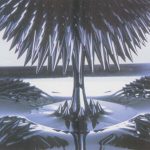
Protrude, flow
[Sachiko Kodama] [Minako Takeno]
Categories: [Installation] [Interactive & Monitor-Based] -
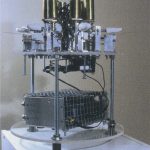
Proximal Actuator
[Jesse Hemminger]
Categories: [3D & Sculpture] -
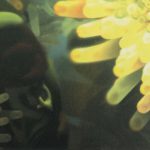
Rebirth of the VooDoo Child
[Petra Evers]
Categories: [2D & Wall-Hung] -
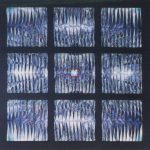
RT111
[Hiroko Uchiyama]
Categories: [2D & Wall-Hung] -
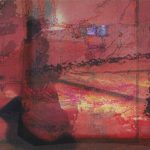
Sarah- Dancing Reflections
[Leslie Sobel]
Categories: [2D & Wall-Hung] -

Second Thoughts
[Dennis H. Miller]
Categories: [Animation & Video] -
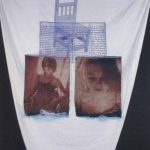
Secrets of the Magdalen Laundries
[Diane Fenster] [Michael McNabb]
Categories: [Installation] -
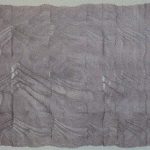
Shandong Mountains
[Jean-Pierre Hébert]
Categories: [2D & Wall-Hung] -
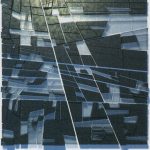
Six-Part Pattern Series: 2000.3; 2000.5;...
[Kenneth A. Huff]
Categories: [2D & Wall-Hung] -

Sunagimo
[Yosuke Fukano]
Categories: [Animation & Video] -
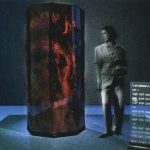
Telomeres Project On Imminent Immortalit...
[Ellen Sandor]
Categories: [Installation] [Interactive & Monitor-Based] -

Tentacular Continuum, Detail 3
[Kent Oberheu]
Categories: [2D & Wall-Hung] -

Texas Moments
[Tarikh Korula]
Categories: [Interactive & Monitor-Based] -
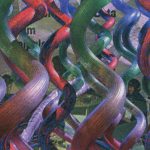
That Brain Wave Chick V
[Mark Applebaum] [Paras Kaul]
Categories: [Performance] -
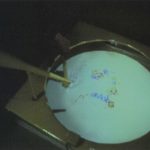
The Floating Words
[Satoko Moroi] [Shinji Sasada]
Categories: [Installation] [Interactive & Monitor-Based] -

The Smoker
[Gene A. Felice II]
Categories: [3D & Sculpture] -
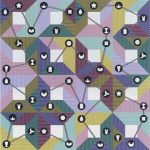
Time Cycle
[Paul Hertz]
Categories: [2D & Wall-Hung] -
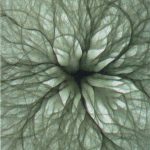
Transport II
[Eric Heller]
Categories: [2D & Wall-Hung] -
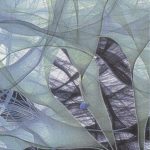
Transport III
[Eric Heller]
Categories: [2D & Wall-Hung] -

Transport VI
[Eric Heller]
Categories: [2D & Wall-Hung] -
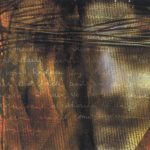
Undefined
[Jessica Maloney]
Categories: [2D & Wall-Hung] -

Used Chambers
[Leslie Nobler]
Categories: [2D & Wall-Hung] -
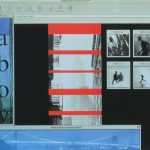
Visual Chaos
[Jody Zellen]
Categories: [Internet Art] -
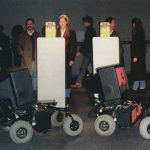
VR Keith 2.0
[Keith Roberson]
Categories: [Performance] -
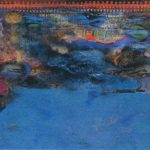
Waterworks
[Phillip George]
Categories: [2D & Wall-Hung] -

What Noh Masks Whisper to Us
[Akiko Tohma]
Categories: [2D & Wall-Hung] -
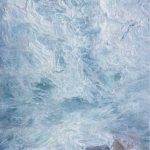
Whitewater
[Phillip George]
Categories: [2D & Wall-Hung]
1
2
Next ›
Last »
Exhibition Writings and Presentations:
-
Title:
A Preliminary Poetics for Interactive Drama and Games
Author(s):
Category: Paper
Abstract Summary:
Interactive drama has been discussed for a number of years as a new AI-based interactive experience. While there has been substantial technical progress in building believable agents and some technical progress in interactive plot,16 no work has yet been completed that combines plot and character into a full-fledged dramatic experience. The game industry has been producing plot-based interactive experiences (adventure games) since the beginning of the industry, but only a few of them (such as “The Last Express”) begin to approach the status of interactive drama. Part of the difficulty in achieving interactive drama is due to the lack of a theoretical framework guiding the exploration of the technological and design issues surrounding interactive drama. This paper proposes a theory of interactive drama based on Aristotle’s dramatic theory but modified to address the interactivity added by player agency. This theory both provides design guidance for interactive dramatic experiences that attempt to maximize player agency (answering the question “What should I build?”) and technical direction for the AI work necessary to build the system (answering the question “How should I build it?”). In addition to clarifying notions of interactive drama, the model developed in this paper also provides a general framework for analyzing player agency in any interactive experience (e.g., interactive games).
[View PDF]Title: Art in the Information Age: Technology and Conceptual Art
Author(s):
Category: Paper
Abstract Summary:
By the mid-1960s, Marshall McLuhan prophesied that electronic media were creating an increasingly interconnected global village. Such pronouncements popularized the idea that the era of machine-age technology was drawing to a close, ushering in a new era of information technology. Sensing this shift, art historian and curator K.G. Pontus Hulten organized a simultaneously nostalgic and futuristic exhibition on art and mechanical technology at the Museum of Modern Art in New York in 1968. The Machine: As Seen at the End of the Mechanical Age included work ranging from Leonardo Da Vinci’s 16th-century drawings of flying machines to contemporary artist-engineer collaborations that won a competition organized by Experiments in Art and Technology, Inc. (EAT).¹
[View PDF]Title: Dialogue with a Monologue: Voice Chips and the Products of Abstract Speech
Author(s):
Category: Paper
Abstract Summary:
This paper argues that voice chips and speech recognition chips can be used as a unique analytic tool for understanding the complex techno-social interactions that define, imagine, and produce new products. Using these chips as an in situ instrument allows a focus on products in their actual context of use, capturing the multiple interpretations of new technologies, and a method to analyze their failures and successes in human machine interaction. It is the use of voice that is direct evidence of the interactive, particularized and social aspects of products that are traditionally underrepresented in the attempts to understand technological innovation, design, and deployment.
[View PDF]Title: Erasing Boundaries: Intermedia Art in the Digital Age
Author(s):
Category: Panel / Roundtable
Abstract Summary:
“Intermedia” is a term coined by the Fluxus artist and theorist Dick Higgins which refers to works of art that include structural elements not usually associated with the medium being performed. Although intermedia can be “multimedia” it certainly does not have to be. In this panel we would like to make the distinction between the two terms.
In intermedia, the compositional process works across the boundaries between media or even fuses media. Thus intermedia implies structures that are shared by or translated from one medium to another: in this respect it is a more specifically defined term than multimedia. While it is sometimes called “synesthetic art,” intermedia does not seek to imitate the physiological phenomenon of synesthesia, but approaches it metaphorically. It extends the creation of form across sensory modalities without necessarily promoting a tight coupling of multisensory events. Synesthetic coupling is just one potential contrapuntal technique for intermedia, a kind of parallel movement. Other possibilities abound, and intermedia is just getting started as an artform.
With the advent of digital multimedia and real time interaction and performance with computers, intermedia can now achieve a precision and synchronicity of events that were not possible until the last two decades. Moreover, digital media enable compositional structures to operate at all levels of granularity and with a degree of abstraction that places all media on the same plane. One could argue that digital intermedia is the high-level process that corresponds to the low-level truism: all media is data, a single substance. Intermedia suggests that we explore that substance with all available senses.
This panel will examine the historical concept of intermedia, compositional methods and processes for creating intermedia, issues of sense perception and sensory coupling in the reception of intermedia, and the implications of digital multimedia, real time performance and interaction for the future development of intermedia. We also expect to open the discussion to the metaphoric and even magical qualities associated with synesthesia, and to the relation of multisensory stimuli to memory, but by grounding the panel in compositional practices and structures we hope to avoid some of the pitfalls of interpretation that the mystique of synesthesia often inspires.
While we cannot predict the trajectory of intermedia across the imaginary of the 21″ century, it holds out the possibility of new forms and experiences. At a time when we have begun to suspect that formal invention had collapsed along with the historical avantgarde, this may even permit us a brief moment of euphoria. We would do well to remember how, at the beginning of the 20th century, the cult of synesthesia promised a mystical revelation that did not transpire. At the beginning of the 21st century, intermedia points to a perceptual revelation that may well transpire. The instruments are in our hands and it seems we have only to learn to play them. To what end and for whom? As much as with the formal and technical issues of digital intermedia, we must also grapple with this question.
[View PDF]Title: Metaphoric Networks in "Lexia to Perplexia"
Author(s):
Category: Essay
Abstract Summary:
As leading theorists and practitioners such as Marvin Minsky, Daniel Hillis and Brian Antwell Smith have been telling us, computers are much more than hardware and software.’ In their most general form, computers are environments of varying scope, from objects that sit on desktops to networks spanning the globe. Indeed, in Edward Fredkin’s interpretation, computational processes ultimately generate the fabric of the universe.’ It comes as no surprise, then, to find researchers arguing that computation is fundamentally altering the ways in which humans conceive of themselves and their relations to others. There are of course many approaches to this issue, from sociological studies to human factor analysis. Among these approaches are artistic works that tell new stories about the formation of human subjects, instantiating these stories in images as well as words. To explore this systemic shift, I will take as my tutor text Talan Memmott’s “Lexia to Perplexia.”‘ In this complexly coded work, human subjectivity is depicted as intimately entwined with computer technologies.
[View PDF]Title: Notime: Identity and Collaboration
Author(s):
Category: Paper
Abstract Summary:
Although communication networks offer the possibility of a distributed community that can collaborate and exchange vital information, there is little time for these collaborations and exchanges to occur. Ironically, the same technology that makes distributed community a possibility and promises to save us time prevents us from actually having time to build community. Distributed presence inevitably moves us towards group consciousness, which shifts our perception of time and even productivity. This essay uses a large collaborative networked art piece, “notime,” as an example of how the creative process shifts when working on the networks. The project attempts to rethink the idea of the avatar as a physical representation and compares it to that of energetic bodies carrying information and evolving with the time people devote to participating, onsite and online. “notime” is conceived to raise questions about our perception of time and identity as we extend our personal networks through technology.
[View PDF]Title: Rethinking Agency and Immersion: Videogames as a Means of Consciousness-Raising
Author(s):
Category: Paper
Abstract Summary:
Until recently, most videogame characters did not reflect our everyday life for the simple reason that most of them were trolls, aliens, and monsters. However, this has changed since the introduction of “The Sims,” the people simulator. Nevertheless, characters in this game are still flat since “The Sims” simulates life in a Disneyland-like way, avoiding ideological conflicts.
Encouraged by authors like Brenda Laurel and Janet Murray, videogame designers have been taking for granted that a high level of agency and immersion are desirable effects. However, I will show that alternative, non-Aristotelian techniques could be used to develop character-driven videogames that enhance critical thinking about ideological issues and social conflicts while keeping the experience enjoyable. I will do this by borrowing some concepts from Bertolt Brecht’s and Augusto Baal’s ideas on non-Aristotelian theater and applying them to videogame design. In this paper, I propose that a modified version of “The Sims” would allow players to create behavioral rules for their characters that reflect their personal opinions. Like in Baal’s Forum Theater, this game would foster critical discussion about social and personal problems.
[View PDF]Title: Schizophrenia and Narrative in Artificial Agents
Author(s):
Category: Paper
Abstract Summary:
In recent years, computer graphics has turned to AI techniques in order to simplify the problem of modeling moving objects for rendering. By modeling the minds of graphically represented creatures, their movements can be directed automatically through AI algorithms and need not be directly controlled by the designer. But what kind of baggage do these AI algorithms bring with them? Here I will argue that predominant AI approaches to modeling agents result in behavior that is fragmented, depersonalized, lifeless, and incomprehensible. Drawing inspiration from narrative psychology and anti-psychiatry, I will argue that agent behavior should be narratively understandable and present an agent architecture that structures behavior to be comprehensible as narrative.
The approach I take in this essay is a hybrid of critical theory and AI agent technology. It is one example of a critical technical practice: a cultural critique of AI practice instantiated in a technical innovation. In the final section of this paper, I will describe the theoretical and practical foundations of the critical technical practice pursued here, which I term socially situated AI.
[View PDF]Title: The Pixel/The Line: Approaches to Interactive Text
Author(s):
Category: Panel / Roundtable
Abstract Summary:
The Web is a major topic at SIGGRAPH 2001, as it has been for several years. But there has not yet been a substantial discussion at a SIGGRAPH conference of the Web’s primary and foundational media: text. This panel brings together five experts who span a range of approaches to responsive text through computer graphics and interactive techniques. The presentations are both theoretical and applied, demonstrating techniques ranging from direct manipulation through artificial intelligence, and drawing on the insights of various fields, from visual art through literature.
[View PDF]Title: The Pleasures of Immersion and Engagement: Schemas, Scripts, and the Fifth Business
Author(s):
Category: Paper
Abstract Summary:
Presently, designers of interactive narratives and video games have only a slender understanding of the aesthetic experiences their audiences and users seek. Using schema theory, this study articulates the two varieties of aesthetic pleasures that users of interactive works enjoy: immersion and engagement. It uses schema theory to define the characteristics of immersion and engagement in both conventional and new media. After examining how readers’ experiences of these two different aesthetics may be enhanced or diminished by interface design, options for navigation, and other features, the essay concludes by looking beyond immersion and engagement to “flow,” a state in which readers are both immersed and engaged.
It must be granted that there is some value in mystification, labyrinth, or surprise in the environment… This is so, however, only under two conditions. First, there must be no danger of losing basic form or orientation, of never coming out. The surprise must occur in an overall framework; the confusions must be small regions in a visible whole. Furthermore, the labyrinth or mystery must in itself have some form that can be explored and in time apprehended. Complete chaos without hint of connection is never pleasurable. – Kevin Lynch, The Image of the City⁵⁷
Those roles which, being neither those of Hero nor Heroine, Confidante nor Villain, but which were nonetheless essential to bring about the recognition or the denouement, were called the Fifth Business in drama and opera companies organized according to the old style; the player who acted these parts was often referred to as Fifth Business. – Robertson Davies, The Fifth Business: The Deptford Trilogy²²
[View PDF]Title: Thick & Thin: "Direct Manipulation" & The Spatial Regimes of Human-Computer Interaction
Author(s):
Category: Paper
Abstract Summary:
Consider a design trajectory, figured on one end by the screens of early command-line computer interfaces and Coleco Vision’s “Donkey Kong” (1981), and on the other, by the more complex and finely rendered spaces depicted in “Tomb Raider III: The Adventures of Lara Croft” (1999) and Apple’s newly-released Mac OS X.
Lara Croft runs, jumps, tumbles, and blasts away at her opponents in visual fields that are more subtle and perspectivally sophisticated than those inhabited by Mario and “Donkey Kong.” The responses of the screen images to the user’s keyboard, gamepad, or joystick have been enormously enhanced, in both quickness and variety. But the fundamental spatial tropology – the tropology of space: abstract space, empty space, space that doesn’t get in the way of players or their agents on the other side of the glass – remains consistent, from the earliest to the most recent examples of both desktop computing interfaces and computer gaming. The conceptual and psychological commonplace that grounds play in the domains inhabited by Mario and Lara, and the principles of “direct manipulation” in the graphical user interface, is the assumption of a permeable field of agency, essentially free of substance or resistance, or marked only by the sorts of resistance that a more efficient game pad, a faster processor, or a more “intuitive” visual metaphor, may eliminate.
In this paper, I propose that the “thin” spaces typical of the modern GUI and videogaming appear self-evident or “intuitive” to users and designers because they draw upon conventions of spatial thought that strategically foreclose traits of actual embodied encounters of human-computer interaction. It is desirable, I argue, to reconceive the forms of space commonly presupposed by the contemporary discourses of the GUI – to grasp these spaces materially, not as empty domains, open to the user’s purposive manipulations of objects sited within them, but rather as persistently impermeable, resistant – “thick” – spaces, in which objects are only imperfectly manipulated and incompletely detachable from the lived moment of the interaction.
[View PDF]Title: Towards Computer Game Studies
Author(s):
Category: Essay
Abstract Summary:
Part 1: Narratology and Ludology
It is relatively stress-free to write about computer games as nothing too much has been said yet, and almost anything goes. The situation is pretty much the same in what comes to writing about games and gaming in general. The sad fact with alarming cumulative consequences is that they are under-theorized; there are Huizinga, Caillois and Ehrmann of course, and libraries full of board game studies, in addition to game theory and bits and pieces of philosophy-most notably those of Wittgenstein’s – but they won’t get us very far with computer games. So if there already is or soon will be a legitimate field for computer game studies, this field is also very open to intrusions and colonization from the already organized scholarly tribes. Resisting and beating them is the goal of our first survival game in this paper, as what these emerging studies need is independence, or at least relative independence.
Title: What Does a Very Large-Scale Conversation Look Like?
Author(s):
Category: Paper
Abstract Summary:
Introduction
The new electronic spaces that I am interested in have the following characteristics in common:
• They are large. Many server sites now support interchanges between hundreds and thousands of people. Usenet newsgroups and large listservs are the most common such sites. I call these usually text-based, usually asynchronous interchanges very large-scale conversations.
• They are network-based. More specifically, they support network-based communities. The boundaries of these spaces and the communities they support are not geographic boundaries. Communities of artists, writers, and scientists are examples of pre-Internet, network-based communities (communities based upon a social network and some shared interests or needs). Network-based communities are of a different kind than geographically based communities like neighborhoods, cities, and nations. Network-based communities (for example, the scientific community) have continued to grow with the help of new network technologies, but contemporary technologies have also engendered a variety of new communities (for example, the open source community).
• They are public. As more and more people gain access to the Internet from their homes or schools rather than from their workplaces, the Internet increasingly becomes a space for public discussion and exchange. Very large-scale conversations are a common event within the confines of large industry (for example, the huge number of communications among thousands of people required to design and build an airplane or coordinate production of a film). However, these have a distinctly different character than the very large-scale conversations in which people are participating as individuals rather than as employees. The Internet is engendering the production of new public spaces that may offer the means to reinvigorate public discourse.
[View PDF]Traveling Art Show Information:
Heroine in Peril Tina Bell Vance 16 x 20 inches Gallery framed inkjet print on watercolor paper 2000 United States Gestures IV and Gestures V ***Diptych. These two pieces are framed together. Lyn Bishop 24 x 34 inches United States Untitled (7369) Gloria DeFilipps Brush 24 x 20 inches United States Closed Concealments Kimberly Burleigh 9 x 12 inches United States Rebirth of the VooDoo Child 1 Petra Evers United States F-G and the Iron Clocks of Film James Faure Walker 28 x 36 United Kingdom Symmetric Design from Chaos: Hellfire III Michael Field 20 x 20 inches United States Intercere #11 John Fillwalk 24 x 30 inches United States Water Works Phillip George 64 x 150 cm Australia White Water Phillip George 110 x 145 cm Australia Courage Harvey Goldman 20 x 16 inches Iris print 2000 United States A Piece of the Pie Melissa Harshman 17 1/2 x 16 inches Lithography, serigraphy, 2000 United States Breast Stroke Melissa Harshman 16 x 16 inches Lithography 1999 United States Oculadders, Part3 David Haxton 38 x 48 inches United States Shangdong Mountains Jean-pierre Hebert 4 x 23 x 21 inches Ink and graphite lead on paper 2001 United States Mount Tai Jean-pierre Hebert 4 x 23 x 31 inches Ink and graphite lead on paper 2001 United States Exponential Eric Heller 48 x 36 inches LightJet using Lumniange process printer on archival color photographic paper, Fuji Crystal Archive 2000 United States Transport II Eric Heller 50 x 36 inches LightJet – using Lumniange process printer on archival color photographic paper, Fuji Crystal Archive 2000 United States Transport III Eric Heller 48 x 32 inches LightJet – using Lumniange process printer on archival color photographic paper, Fuji Crystal Archive 2000 United States Transport VI Eric Heller 25 5/16 x 32 3/16 inches LightJet – using Lumniange process printer on archival color photographic paper, Fuji Crystal Archive 2000 United States Six-Part Pattern Series: 2000.6 Kenneth A. Huff 34 x 34 inches United States Chelovechki-01 Yelena Ilkanayev 43 x 25 United States Curving Spirolaterals (24 pieces) Robert Krawczyk 4 x 4 inches United States Disoriented but not Confused Jessica Maloney 17.5 x 15 inches United States Untitled (ASK YOURSELF?) Jessica Maloney 27 x 23 inches United States Undefined Jessica Maloney 23 x 25 inches United States Used Chambers Leslie Nobler-Farber 9.5 x 8 inches United States Tentacular Continuum (Detail) Kent Oberheu 12 x 8 inches Framed Giclee Iris print on watercolor paper. 1998 United States Forehead Michael O’Rourke 35 x 41 inches United States Octoboy Steven Ramsey 20 x 20 inches United States Gatorman Steven Ramsey 20 x 20 inches United States Ghost Town Artifact: The Keys Naomi Ribner 17 x 14 x 4inches Inkjet print, collographs, charcoal, pastel constructed in a cherry wood box with hinged lid and padlock 1999 United States If These Walls Could Talk: Bubby’s Story Naomi Ribner Iris print on collograph 1998 United States Intersections #5 Kyle Riedel 6 x 8 feet 3D modeled still 2000 United States Old House in the Shadow of the Castle Cynthia Beth Rubin 32 x 42 inches United States Xrossings: Tidal Pool Karin Schminke 32 x 32 inches United States Dancer series of prints: Sarahdancing Reflections Leslie Sobel 23 x 29 inches United States What Noh masks whisper to us Akiko Tohma 45 x 100 cm Japan RT111 Hiroko Uchiyama 81 cm x 81 cm Japan Commuter’s Tunes Anna Ursyn 36 x 18 inches United States Overgrown Artificiality 10 Hye jin Yoo 36 x 48 South Korea Manufactured Existence: The Remains Jason Zimmerman United States Intercere #11 John Fillwalk 24 x 30 inches United States Octoboy Steven Ramsey 20 x 20 inches United States




